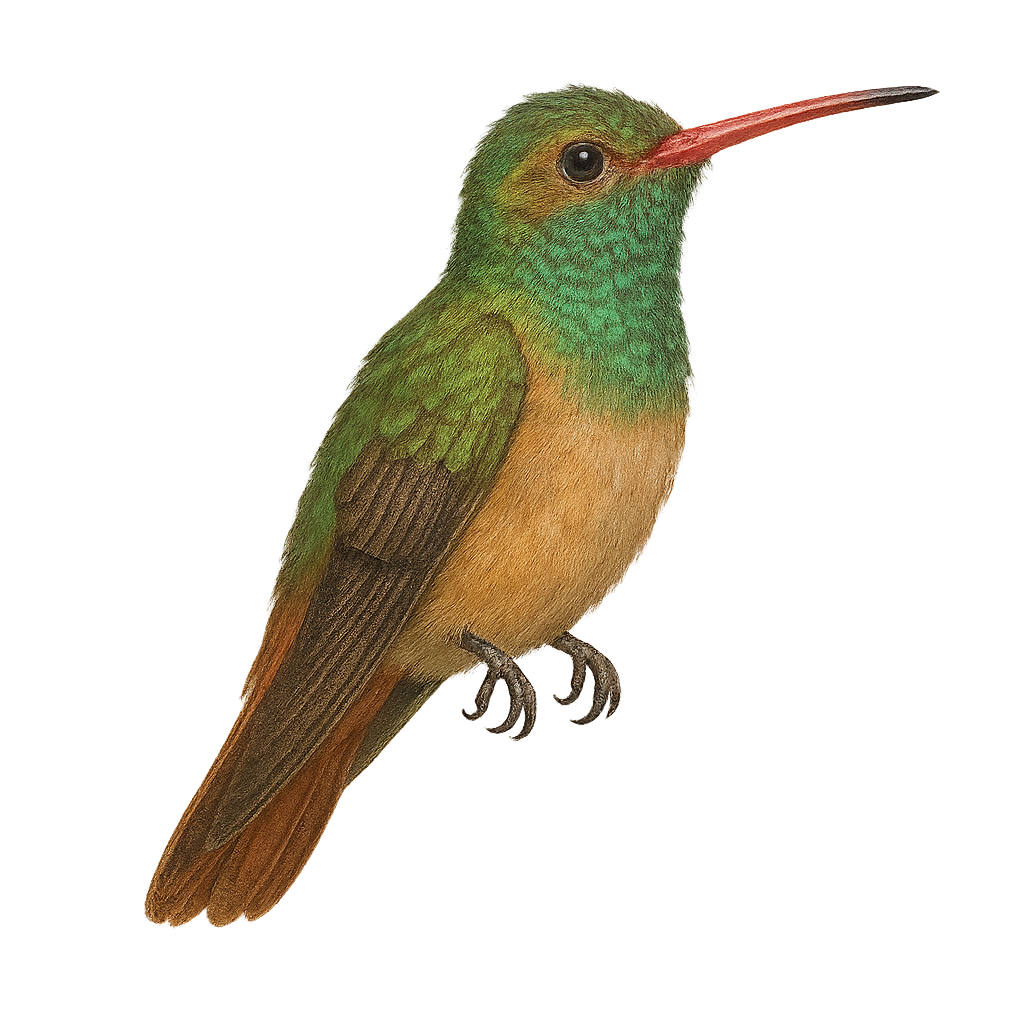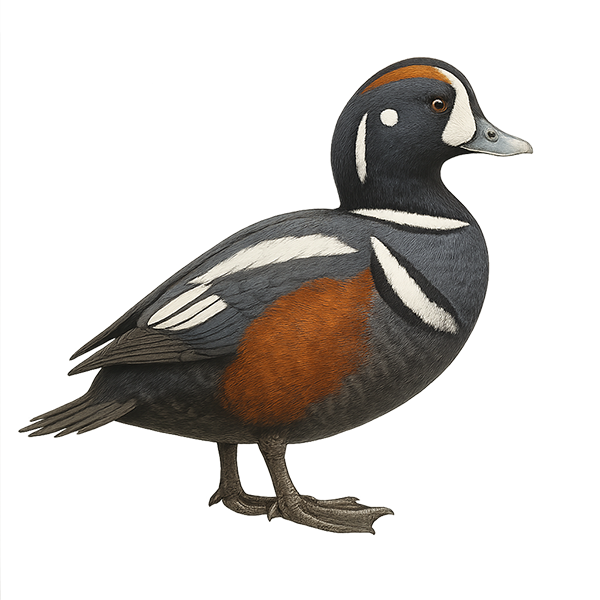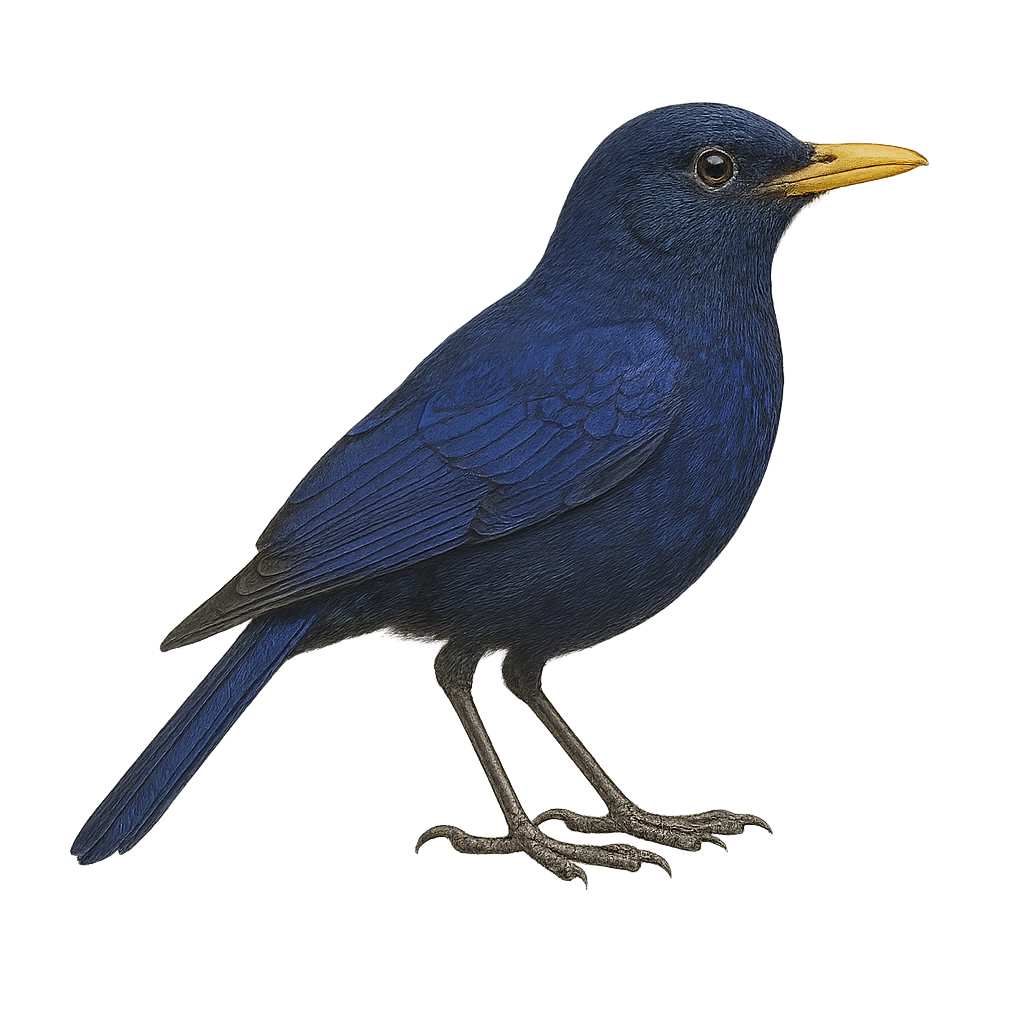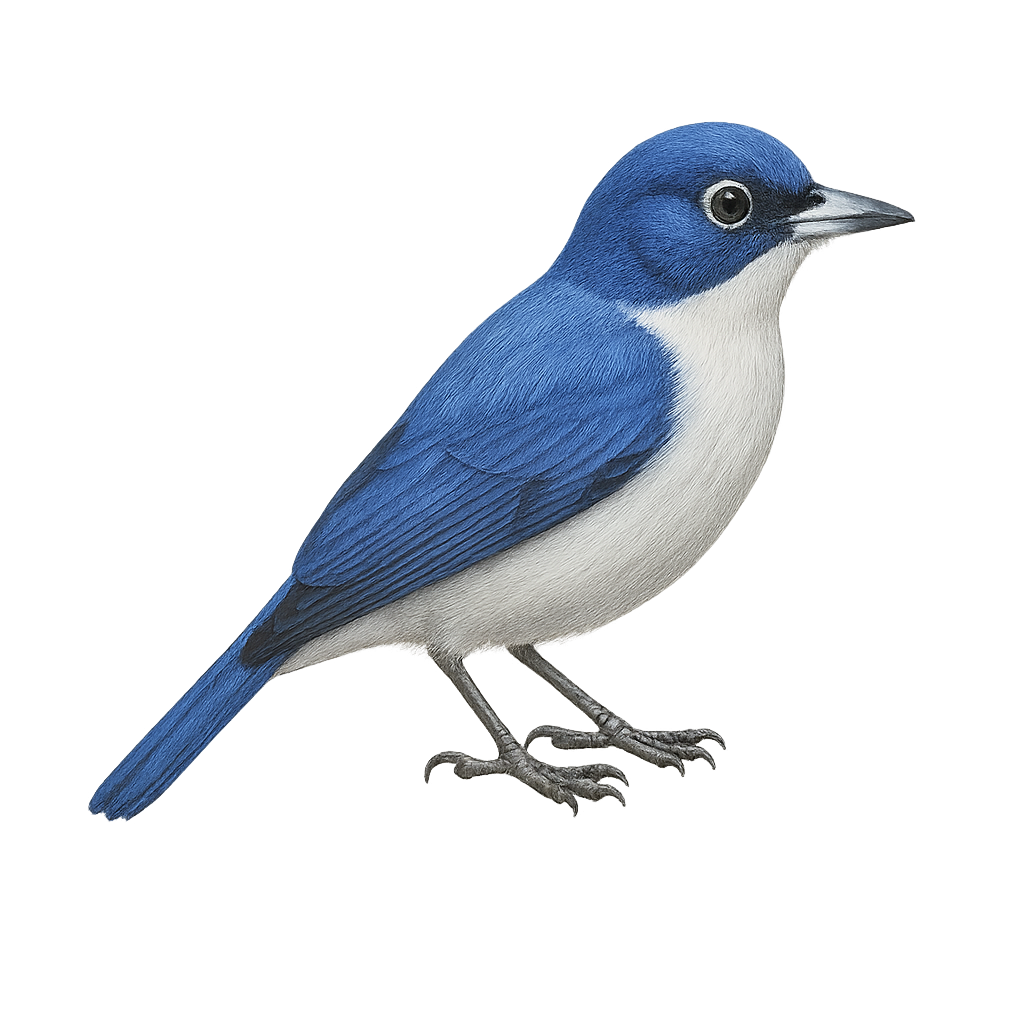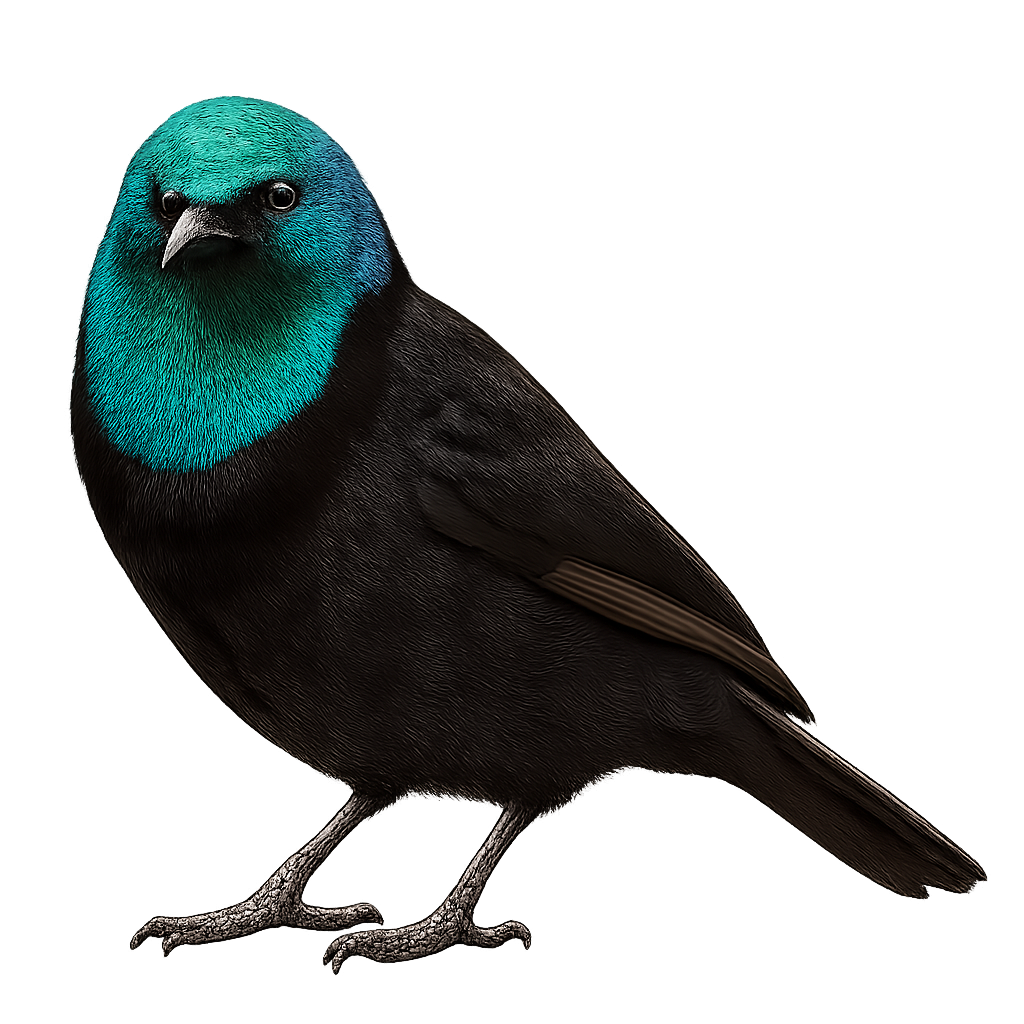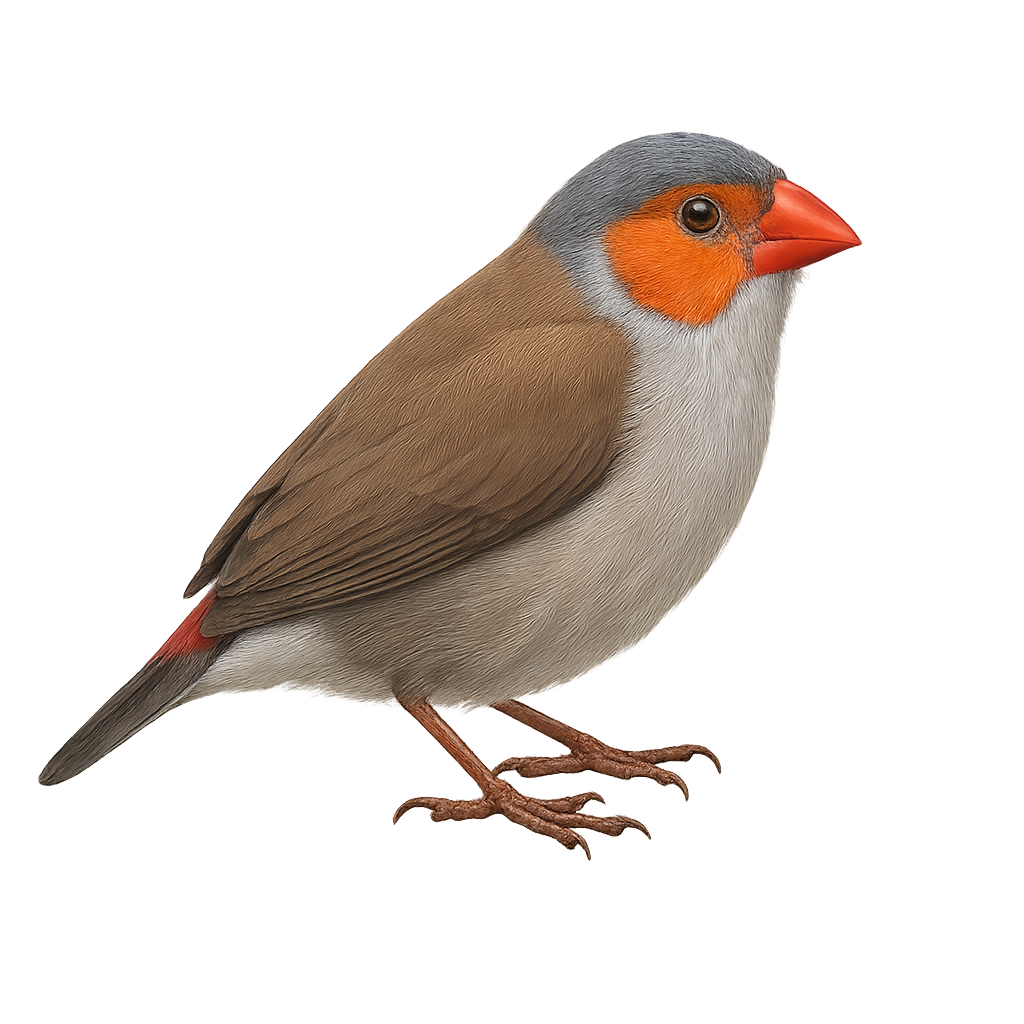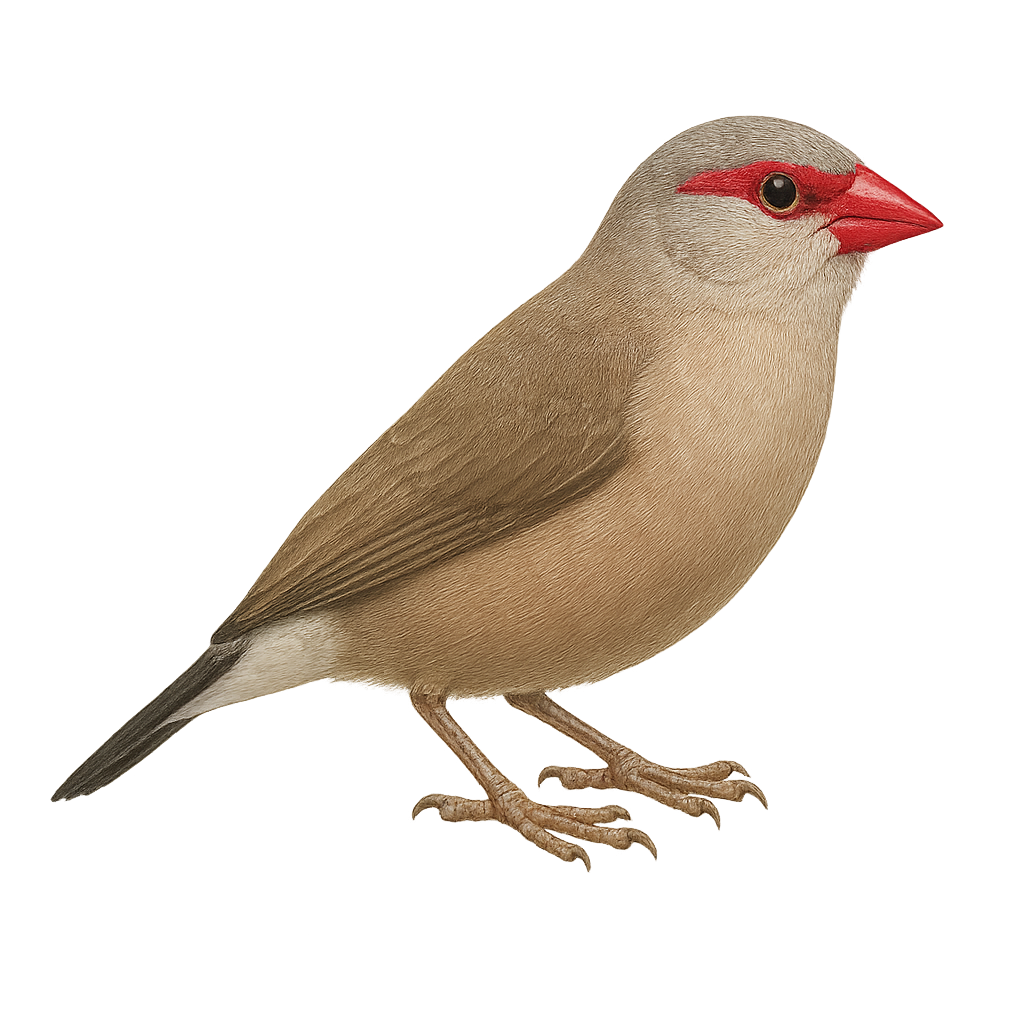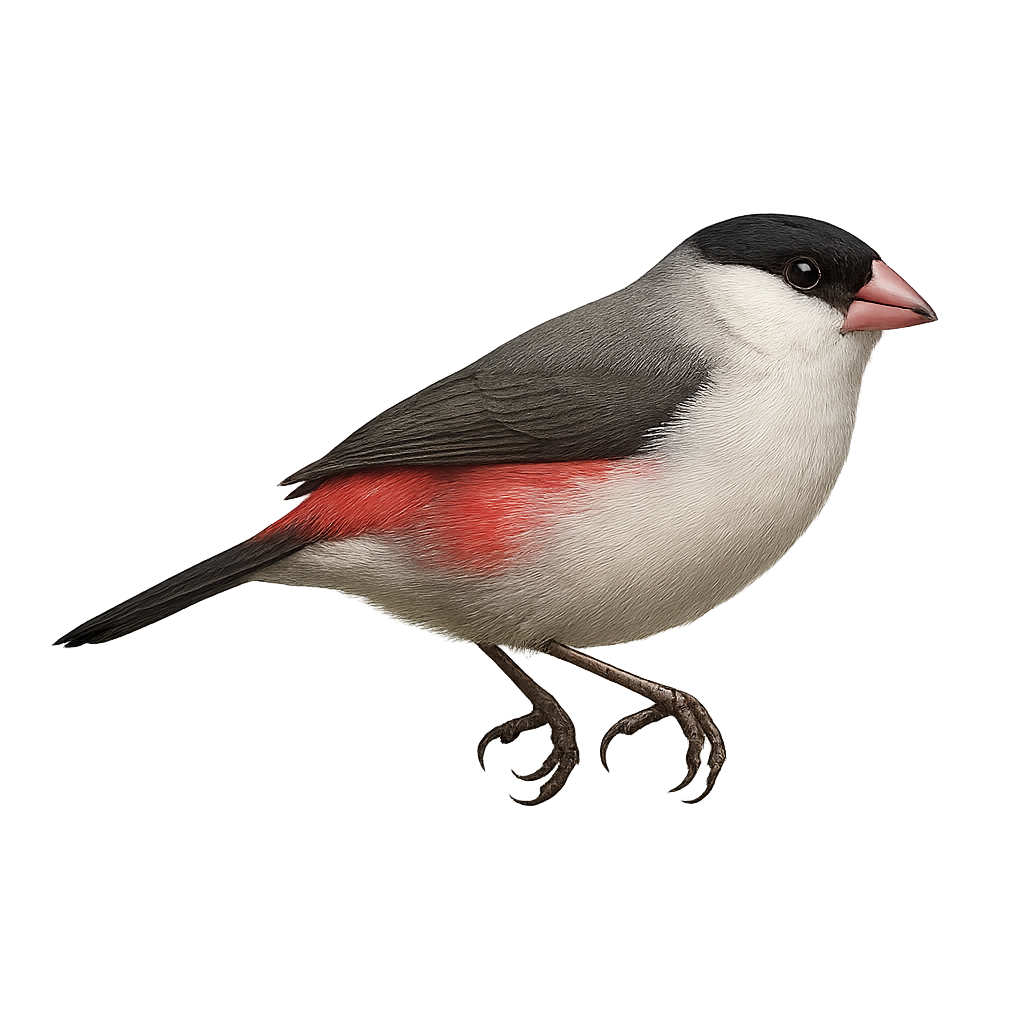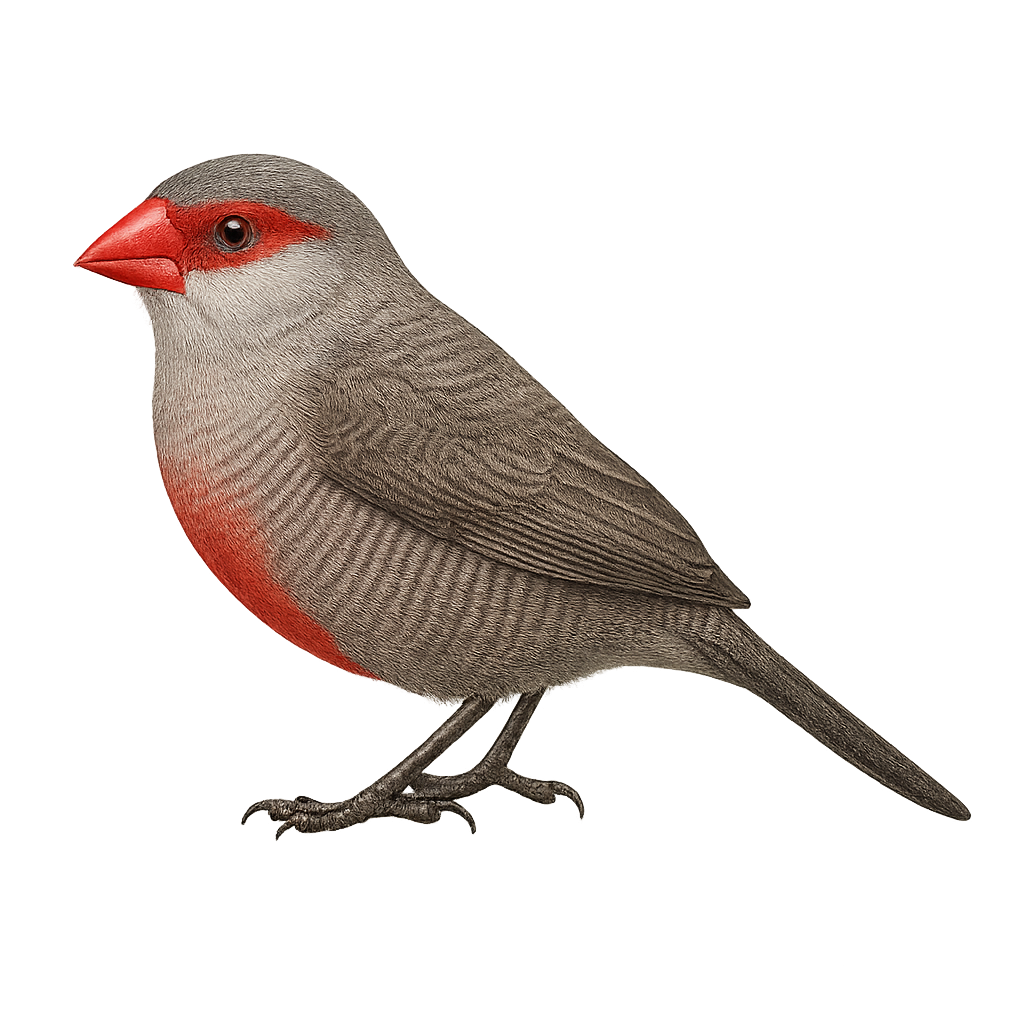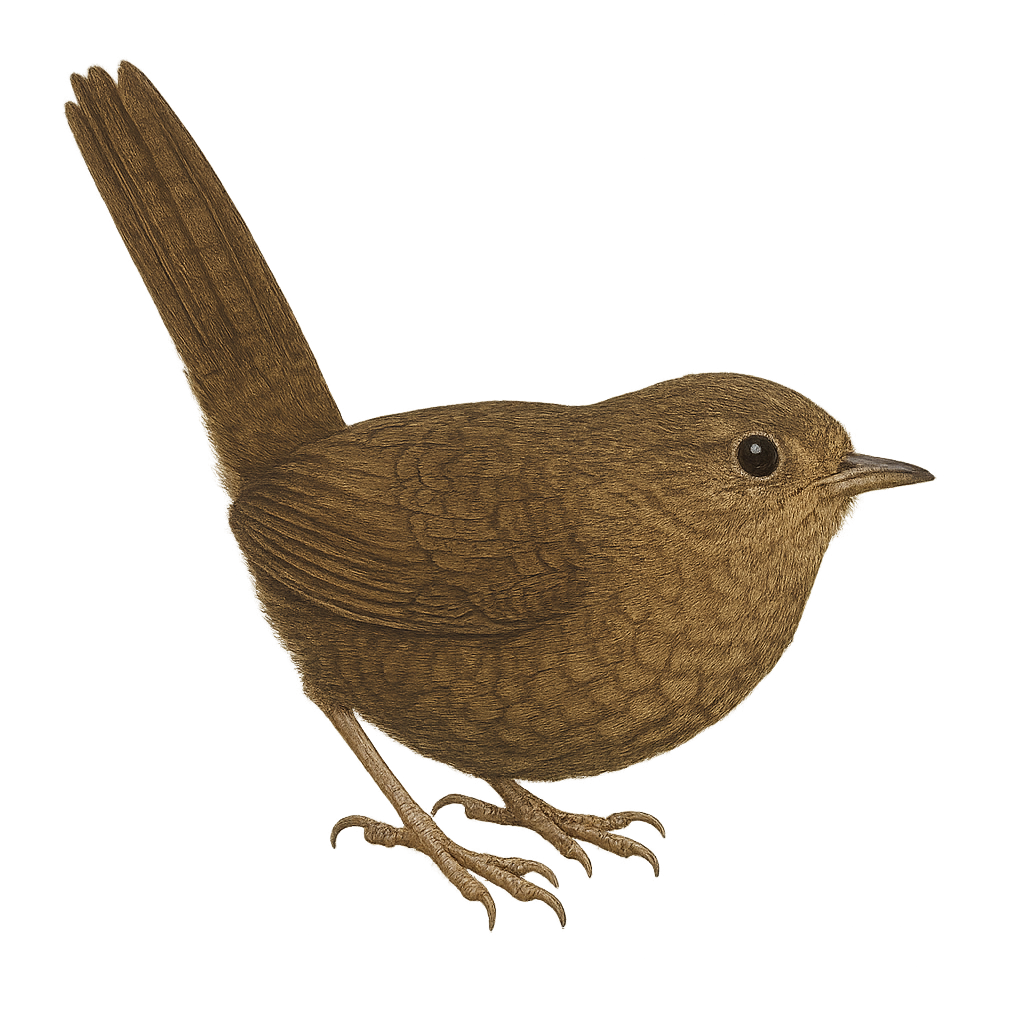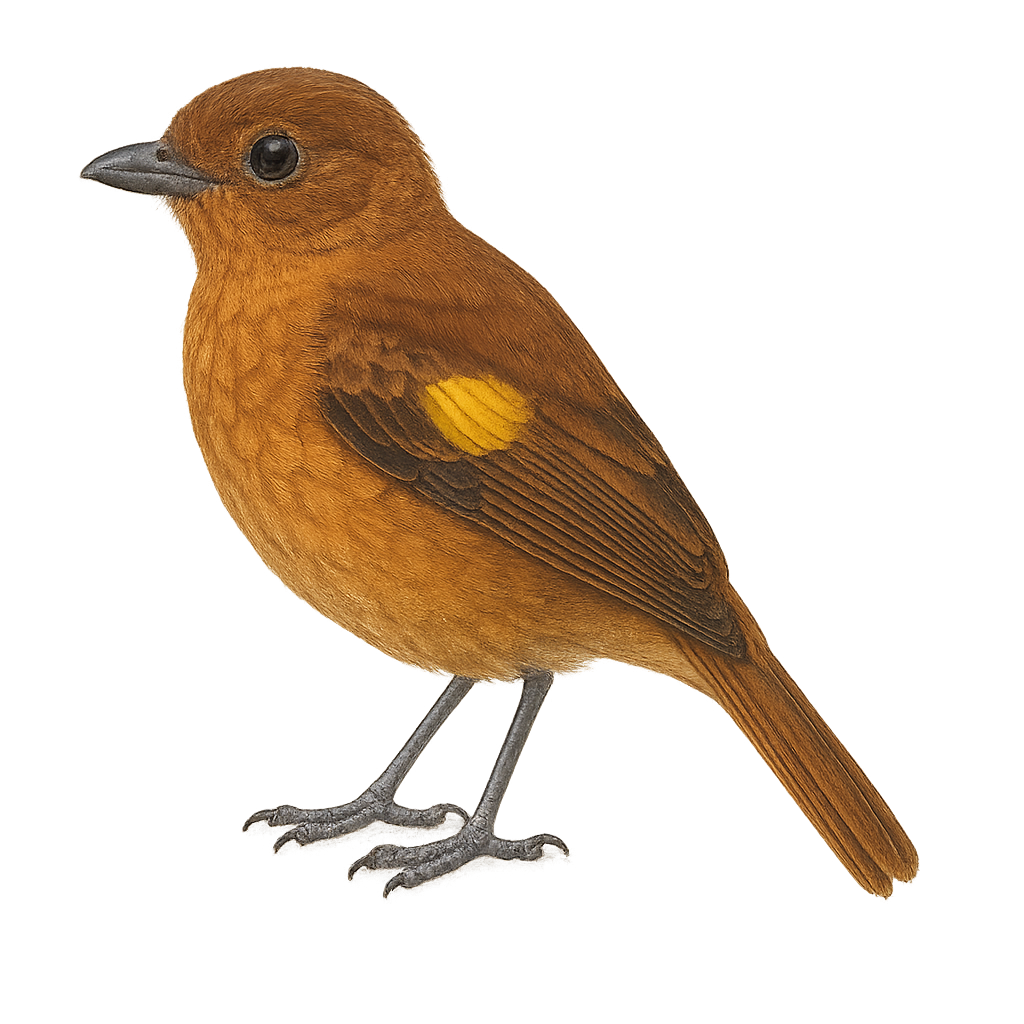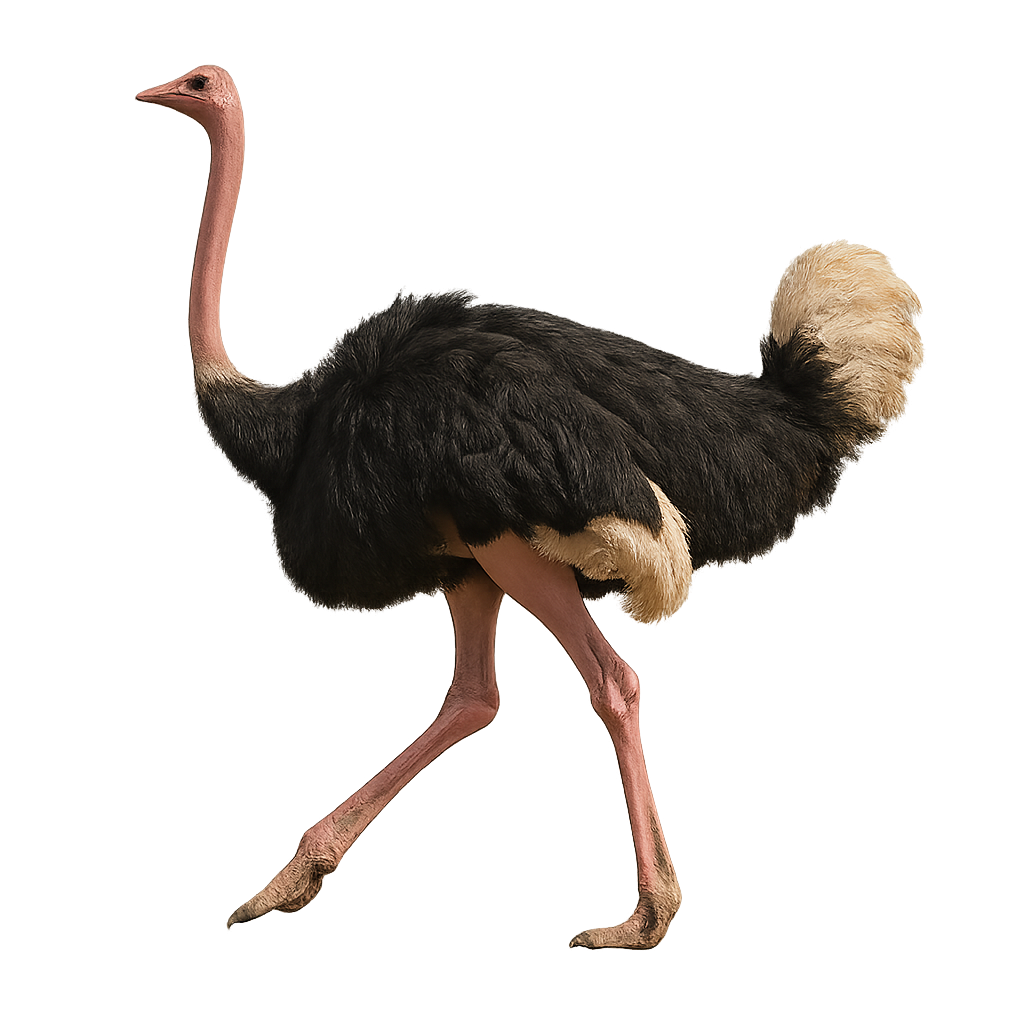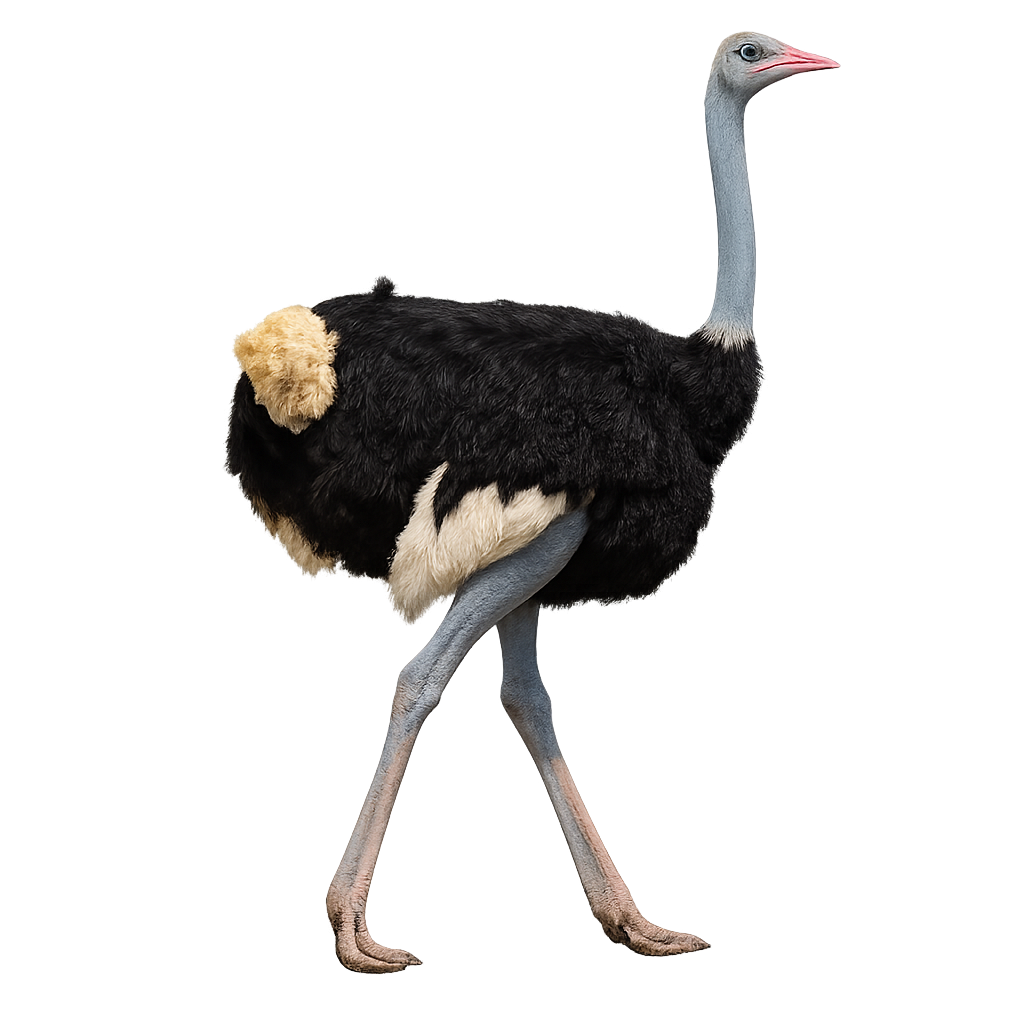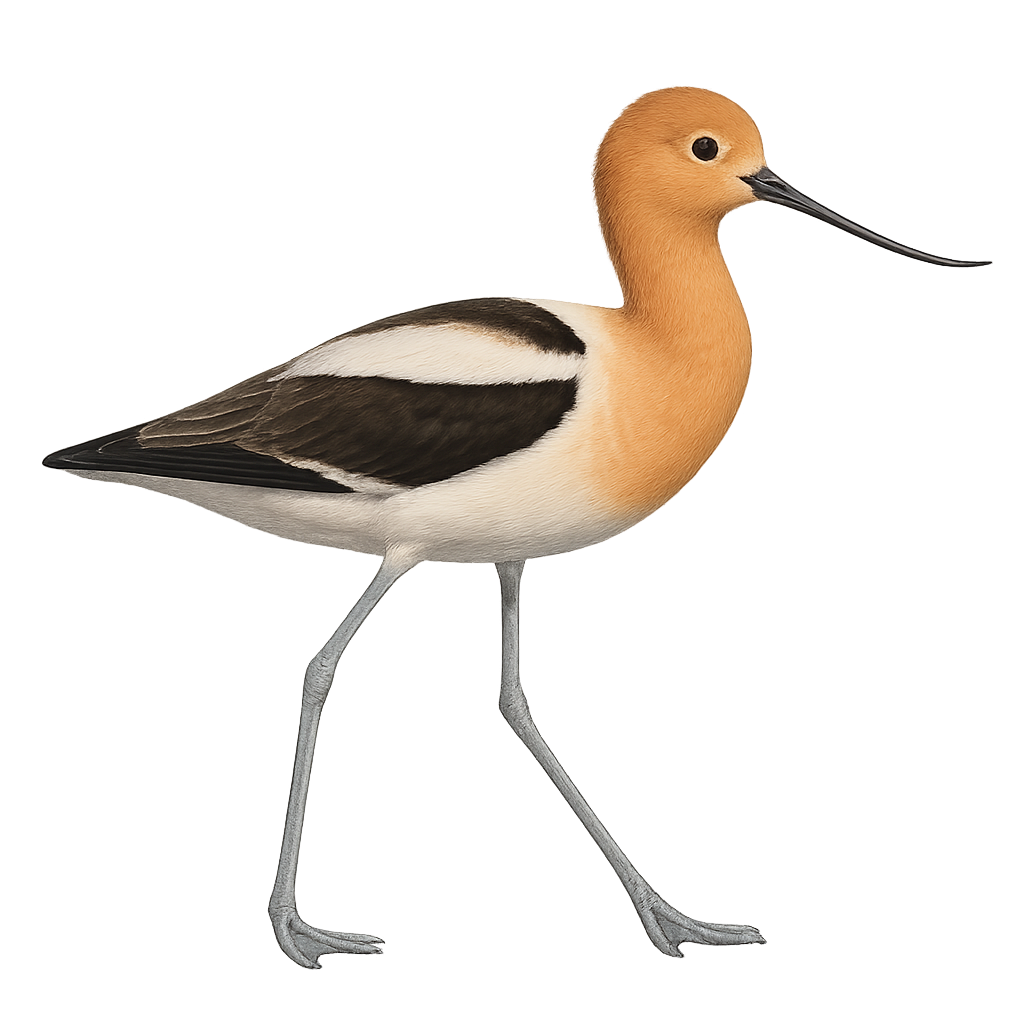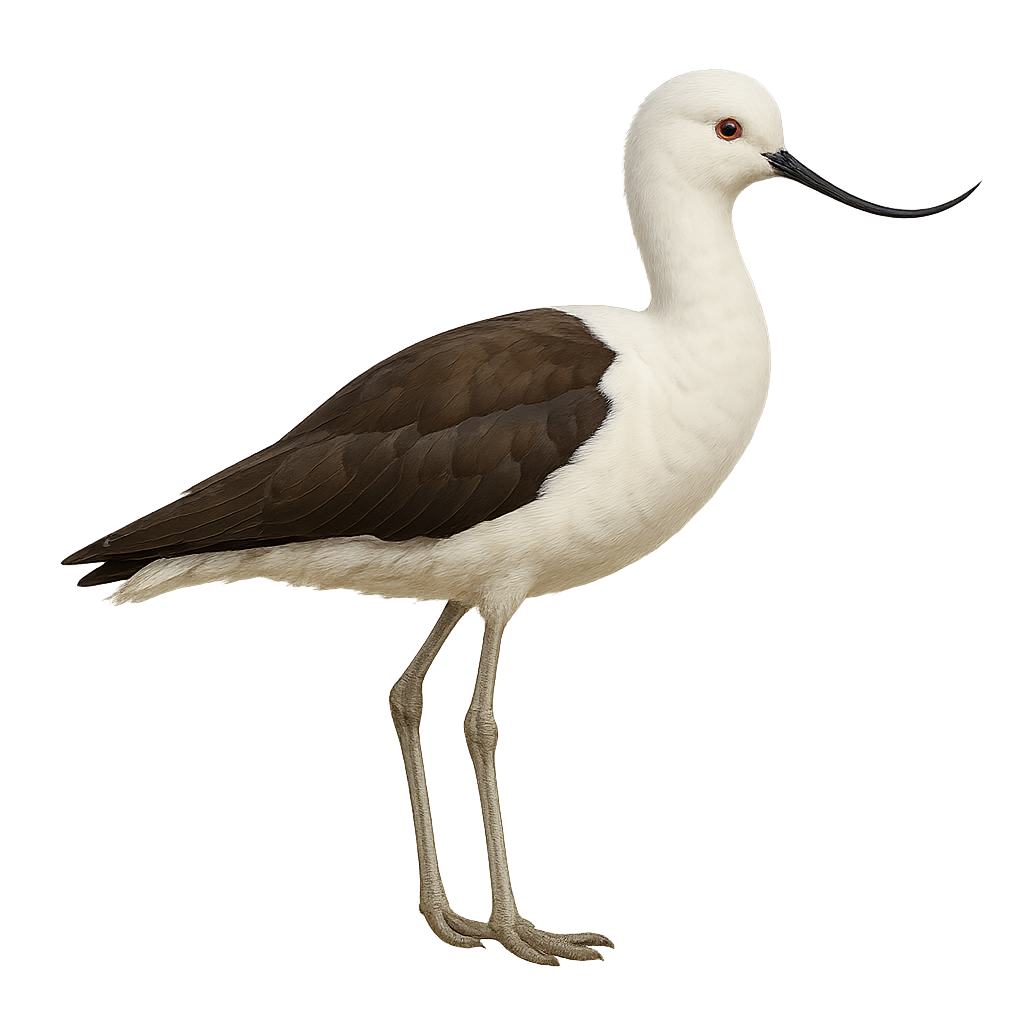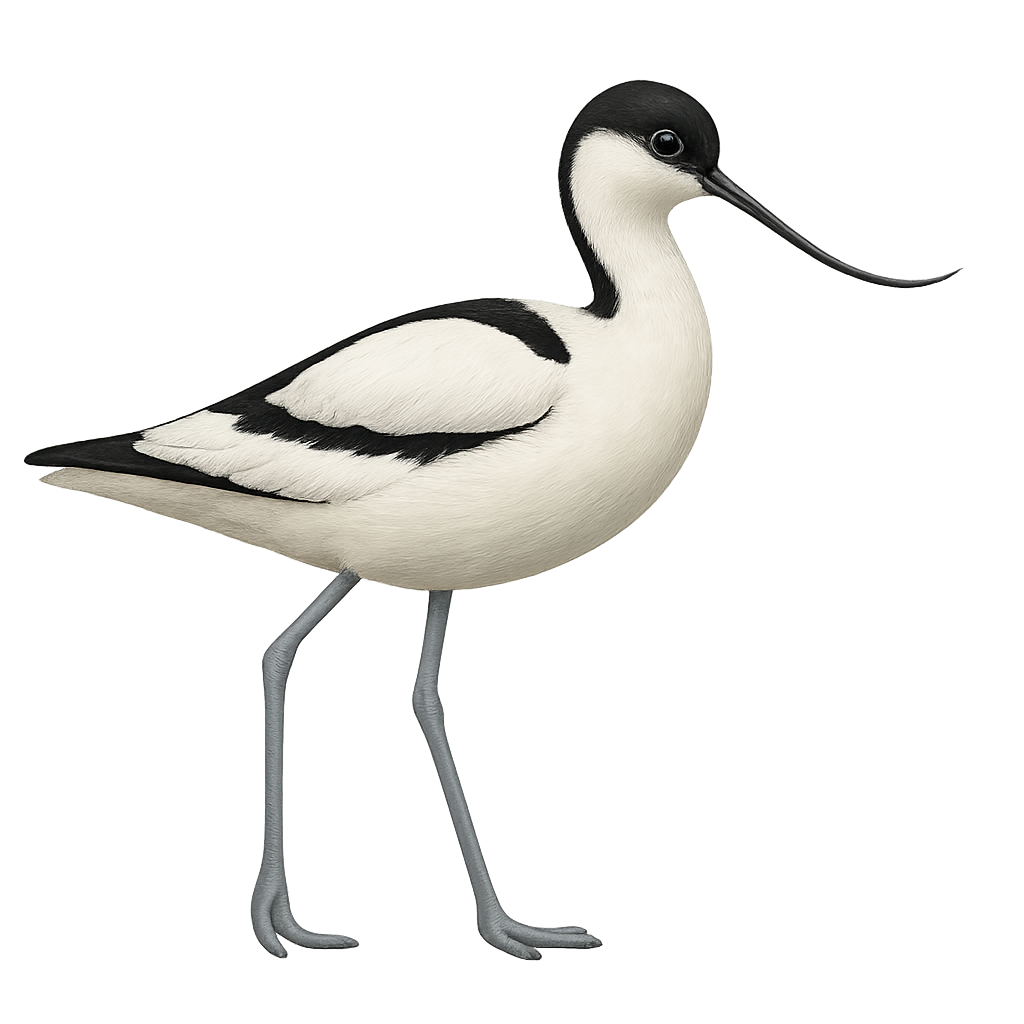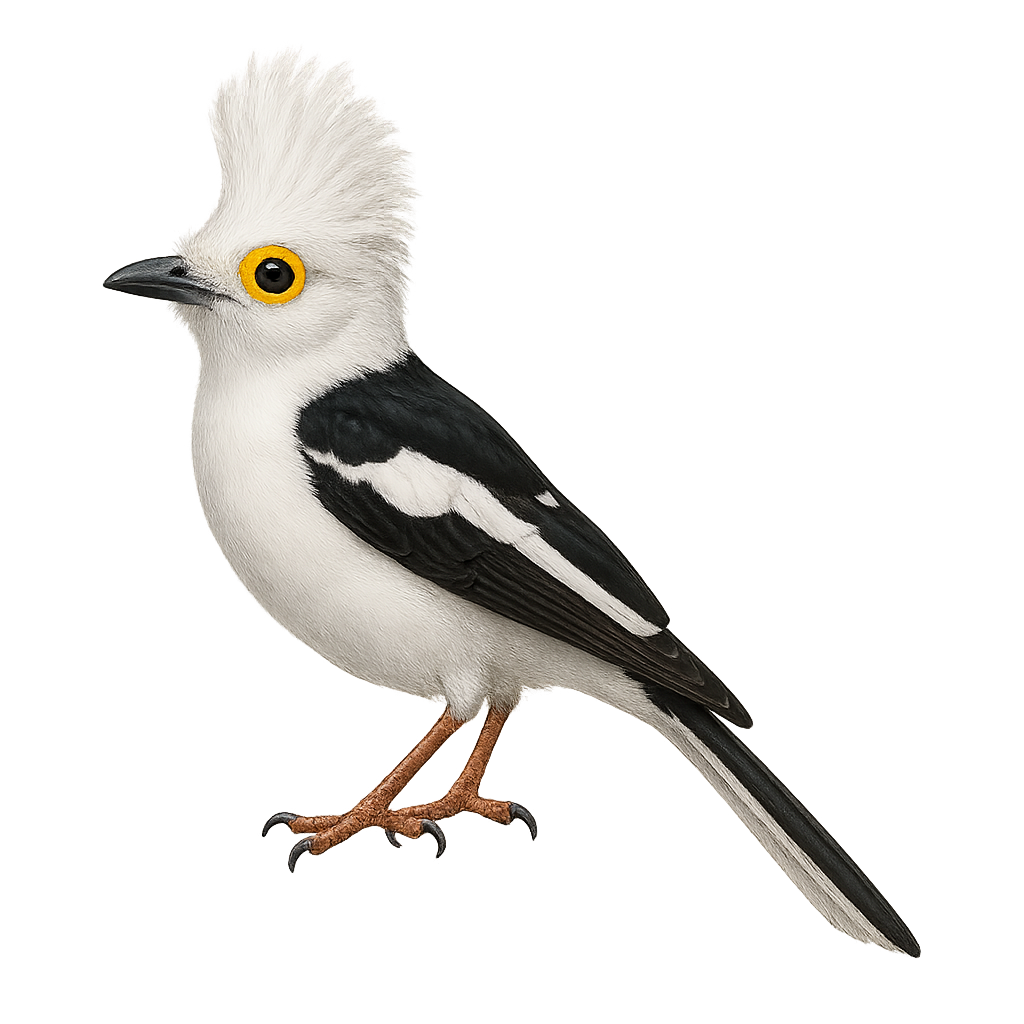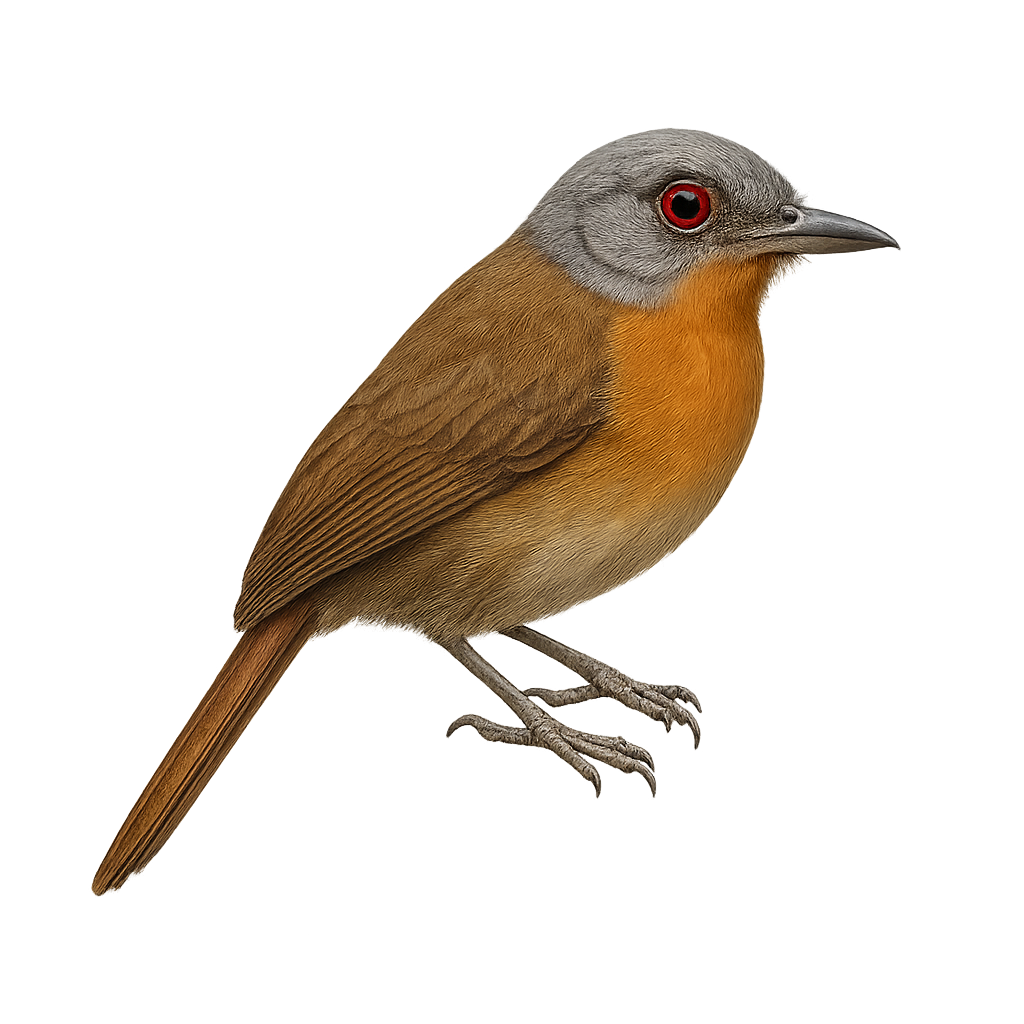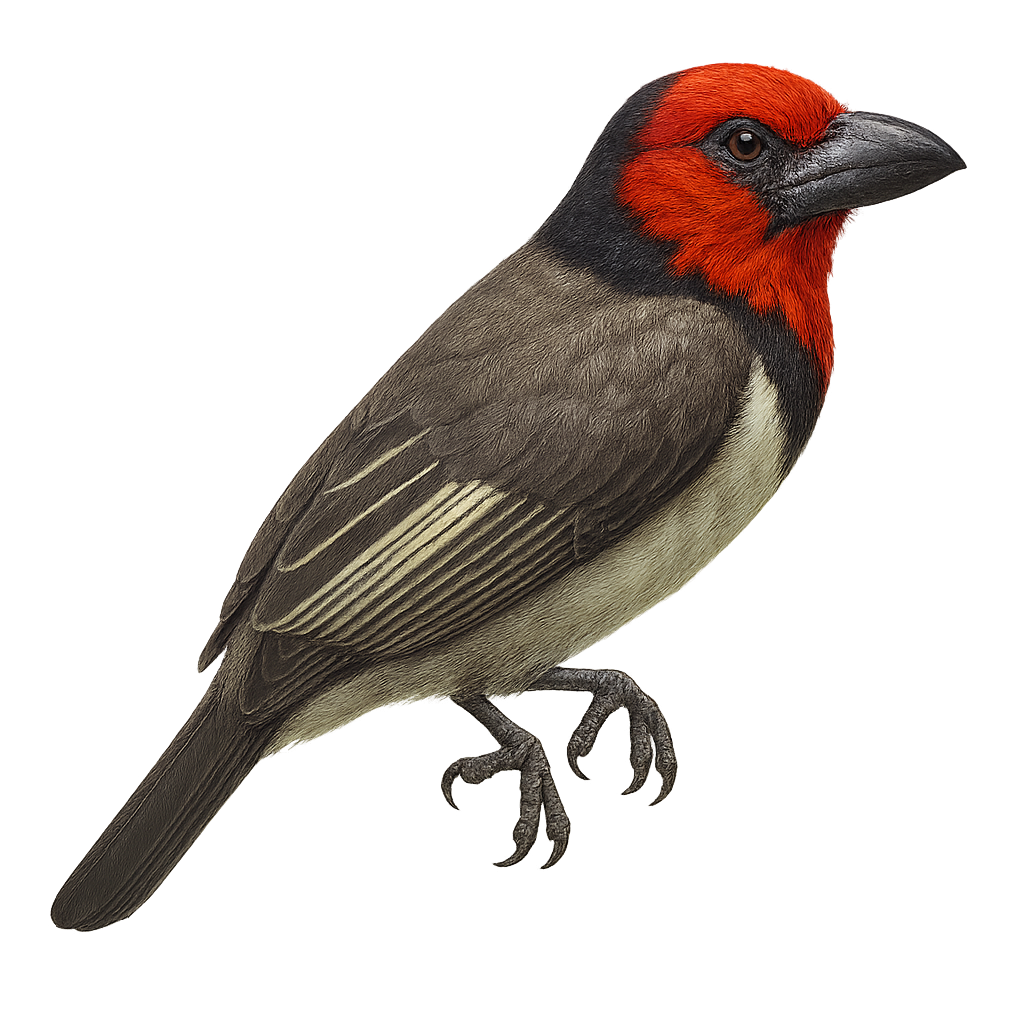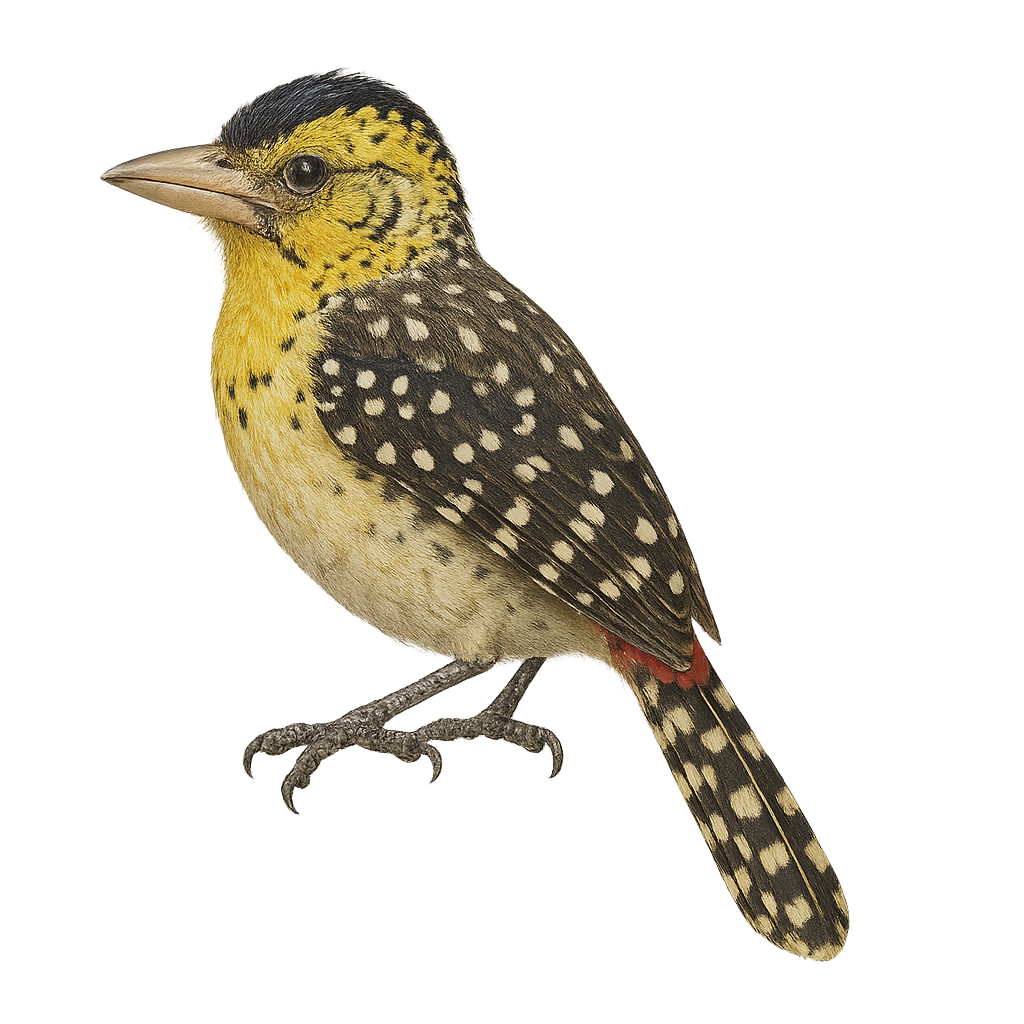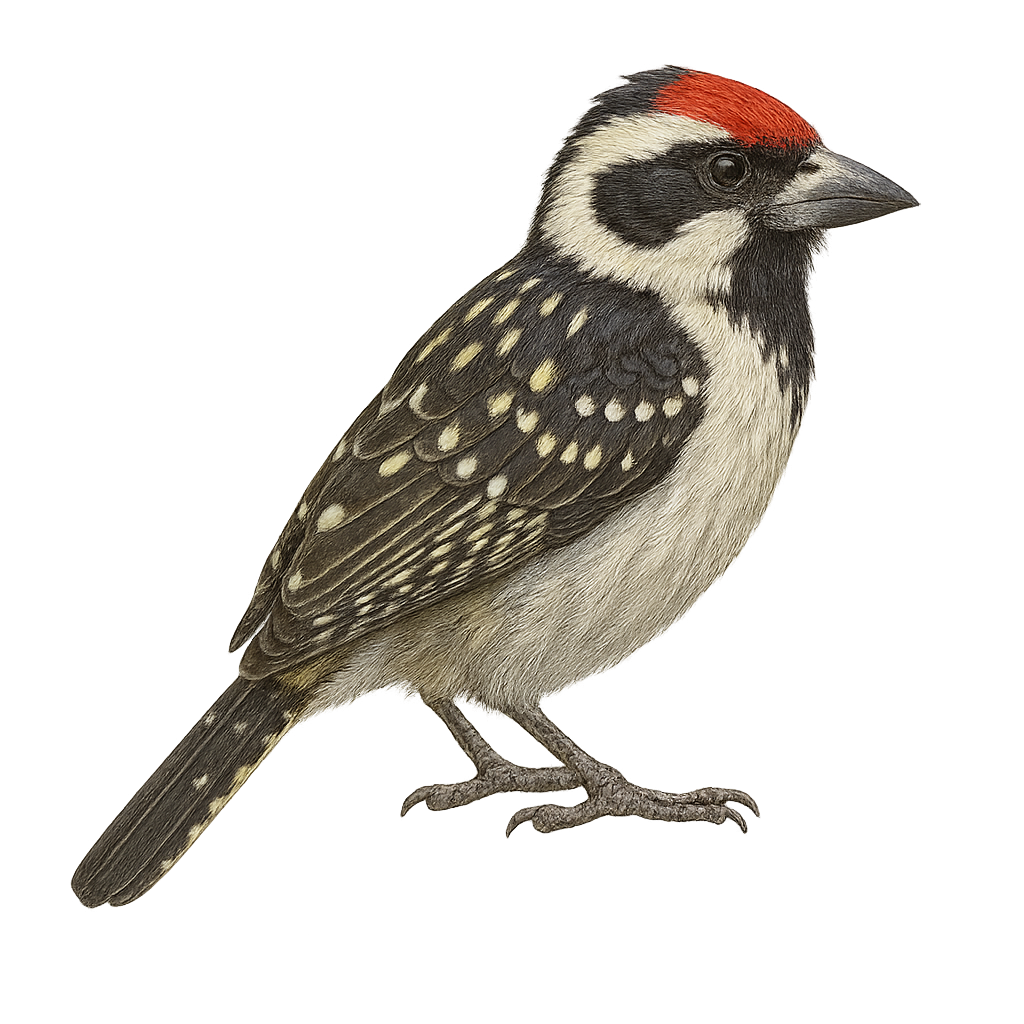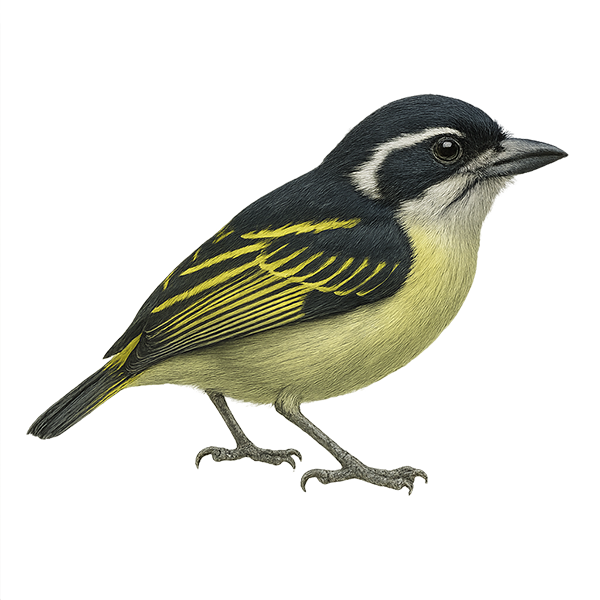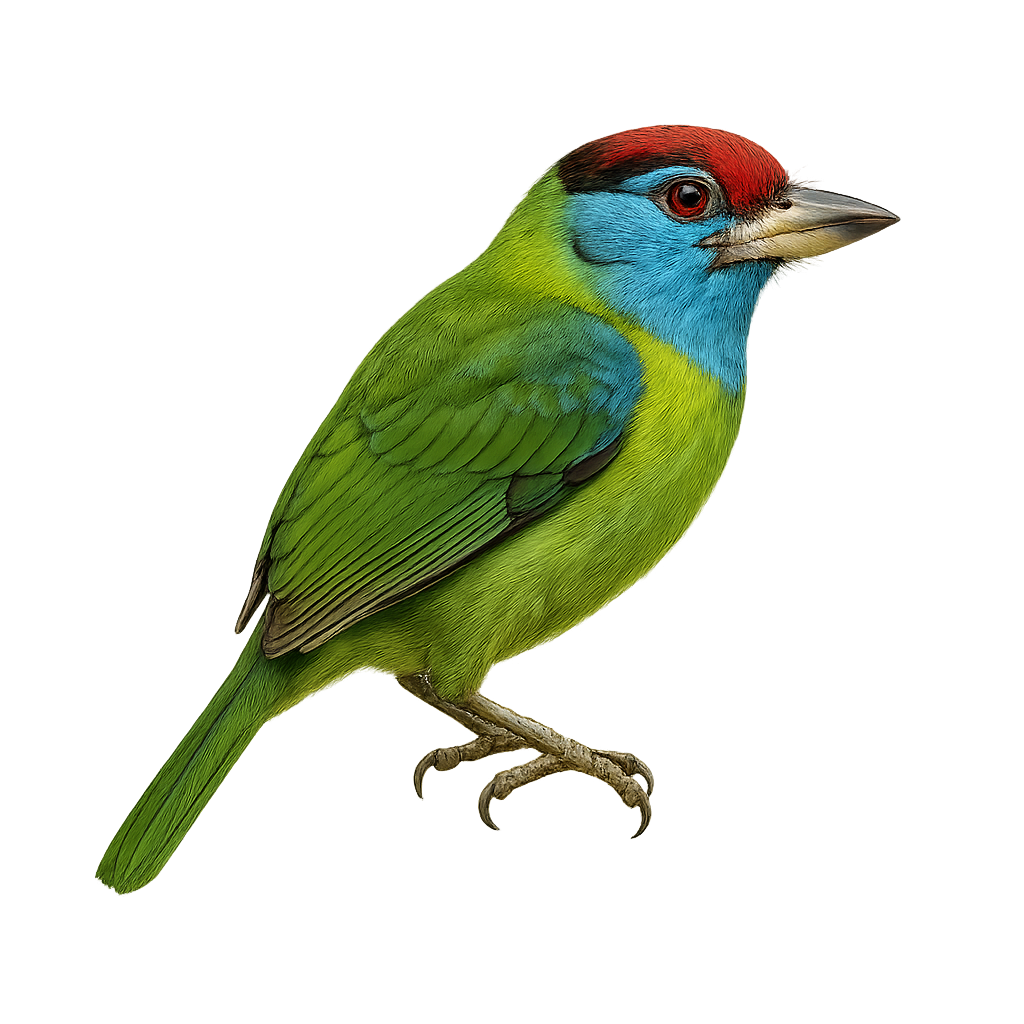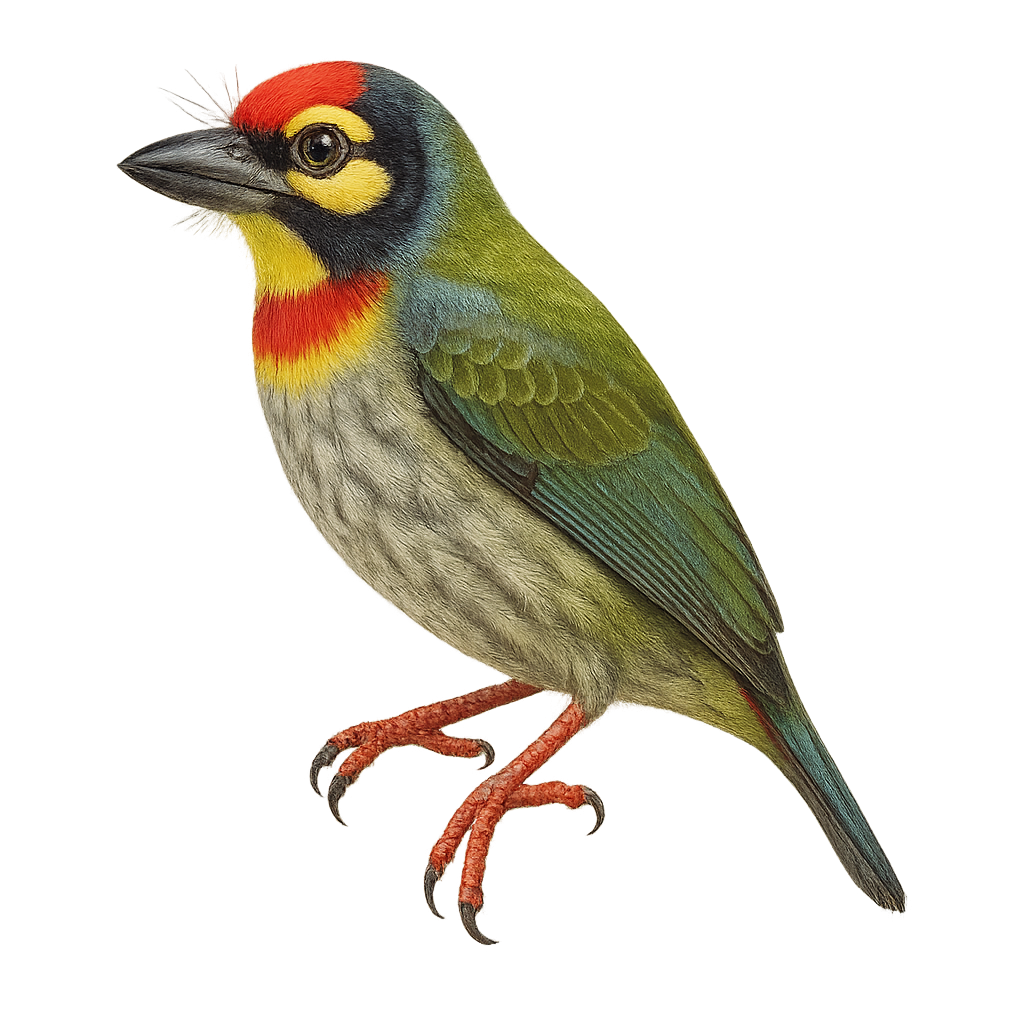The Buff-bellied Hummingbird, Amazilia yucatanensis, is a small, colorful bird, primarily green with a cinnamon-colored chest and belly. It is native to the southern United States and Mexico, where it inhabits tropical forests, mangroves, and gardens. Known for its rapid flight and hovering abilities, this hummingbird efficiently feeds on flower nectar, playing a crucial role in plant pollination. Males are often territorial, aggressively defending their territory against intruders. The breeding season typically extends from spring to summer, with nests built in shrubs or low trees.
The Harlequin Duck, Histrionicus histrionicus, is a medium-sized duck known for its striking plumage. Males display a mix of slate blue, white, and chestnut, with distinctive patterns on the head and body, while females are more subdued with brown tones and white spots around the eyes. This duck is primarily found in fast-flowing rivers and rocky coastlines of North America and Northeast Asia. It is known for its ability to dive and swim in turbulent waters in search of crustaceans and mollusks. The Harlequin Duck is a migratory bird, spending winters along the coasts and returning to rivers to breed in the spring.
The Robinson's Blue Flycatcher, scientifically known as Myophonus robinsoni, is a captivating bird primarily found in the humid tropical forests of the Malay Peninsula. This passerine is renowned for its striking metallic blue plumage, which contrasts beautifully with its black beak and legs. It is often seen near streams, where it hunts for insects and small invertebrates. The Robinson's Blue Flycatcher's song is melodious and complex, making it a delight for birdwatchers and enthusiasts. Although its habitat is limited, it adapts well to secondary forests and degraded wooded areas. However, ongoing deforestation poses a threat to its natural environment, potentially impacting its population in the long term.
The Blue Whistling Thrush, or Myophonus caeruleus, is a medium-sized bird known for its striking deep blue plumage with white spots on its wings. It is commonly found in humid forests, ravines, and near water bodies in South and Southeast Asia. Its melodious and powerful song often echoes at dawn and dusk. This thrush is a solitary bird, although it can be seen in pairs during the breeding season. It primarily feeds on insects, small invertebrates, and occasionally fruits. Its ability to adapt to various habitats, including urban areas, makes it a relatively common bird within its range.
The Madagascar Blue Vanga, or Cyanolanius madagascarinus, is an endemic bird of Madagascar, belonging to the Vangidae family. It is characterized by its striking blue plumage and black facial mask, contrasting with its white belly. This bird is mainly found in the island's humid forests and wooded areas. It primarily feeds on insects and small invertebrates, which it skillfully captures with its robust beak. The Madagascar Blue Vanga is a diurnal bird, active mainly during the day. Although it is relatively not very shy, it remains cautious and prefers dense areas to hide from predators. Its population is currently stable, but deforestation poses a potential threat to its natural habitat.
The Ribbon-tailed Astrapia is a fascinating bird endemic to the mountainous forests of Papua New Guinea. Recognizable by its long, ribbon-like white tail, the male displays an iridescent black plumage with green and violet highlights. The female, more discreet, has brownish tones. This bird primarily inhabits tropical rainforests at altitudes between 1800 and 3500 meters. It feeds mainly on fruits, insects, and small animals. Its behavior is rather suspicious, making it difficult to observe. The breeding period is poorly documented, but it is known that the male performs spectacular courtship displays to attract the female.
Native to the mountains of New Guinea, Rothschild's astrapia is a bird with vibrant colors, featuring an outstanding plumage of iridescent green, blue, and purple. The male is particularly spectacular, with a long tail and feathers adorned with bright colors. This bird is primarily frugivorous but also feeds on insects and small animals. Threatened by habitat loss, Rothschild's astrapia is a protected species.
The Orange-cheeked Waxbill is a small, colorful bird native to sub-Saharan Africa. It is easily recognized by its bright orange cheeks and grey-brown plumage. Measuring about 10 to 12 cm in length and weighing between 7 and 10 grams, this bird inhabits savannas, moist grasslands, and cultivated areas, feeding mainly on seeds and insects. It is a social species, often seen foraging on the ground in groups. Its breeding season varies by region, and it is known for building dome-shaped nests in dense bushes.
The Estrilda troglodytes, commonly known as the Black-cheeked Waxbill, is a small, brightly colored bird native to sub-Saharan Africa. It is easily recognizable by its black cheeks contrasting with its grey and brown plumage. Measuring about 10 to 12 cm in length, this bird is often seen in small flocks in savannas, grasslands, and shrublands. It primarily feeds on seeds but can also consume small insects. Its song is soft and melodious, often heard at dawn and dusk. Although relatively common in its natural habitat, it is sometimes threatened by habitat destruction and capture for the pet trade.
The Black-crowned Waxbill is a small, exotic bird known for its delicate plumage and fascinating social behaviors. It features a black head contrasting with a grey-brown body and pinkish flanks. Native to Central Africa, this bird inhabits savannas, open forests, and wetlands. It primarily feeds on small seeds, supplemented by insects. Sociable by nature, it lives in groups and builds ball-shaped nests in bushes. Its breeding season varies by region but often coincides with the rainy season. Although not endangered, deforestation and capture for the bird trade can impact its populations.
The common waxbill, or Estrilda astrild, is a small exotic bird native to sub-Saharan Africa. It is easily recognizable by its grey-brown plumage with a bright red stripe on its belly and around its eyes. Measuring about 11 to 13 cm in length, this bird is often seen in groups in grassy areas, marshes, and gardens. Its conical beak is adapted to its diet mainly consisting of seeds, although it also consumes small insects. The common waxbill is appreciated for its soft and melodious song. Although often kept as an aviary bird, it has also adapted well to various environments outside its native habitat.
The Rufous Scrub-bird is a secretive and rare bird, endemic to the rainforests of eastern Australia. Small in size, it measures about 17 cm in length and sports a reddish-brown plumage that allows it to blend into its surroundings. This bird is primarily terrestrial, moving stealthily among dense undergrowth in search of insects and other small invertebrates. Its powerful and varied song is often the only clue to its presence, as it is difficult to spot. The Rufous Scrub-bird is monogamous and highly territorial, vigorously defending its space against intruders. Habitat destruction poses a major threat to its survival, leading to its classification as a vulnerable species by the IUCN.
The Rufous-capped Manakin, or Laniocera rufescens, is a captivating bird found in the tropical rainforests of Central America. This small bird, measuring about 15 cm, is notable for its reddish-brown plumage and rufous cap. It is often seen in dense undergrowth, feeding primarily on fruits and insects. The Rufous-capped Manakin is renowned for its elaborate courtship displays, where the male performs intricate dances to attract a mate. Although discreet, this bird plays a crucial role in seed dispersal, aiding in the regeneration of its habitat. Its population is currently stable, but deforestation poses a potential threat to its natural environment.
The Northern Goshawk is an elegant and powerful raptor, known for its slender silhouette and rapid, erratic flight through dense forests. This medium-sized hawk primarily inhabits temperate forests in Europe, Asia, and North America, where it hunts birds, primarily wood pigeons, doves, and sometimes smaller prey. The Northern Goshawk is an exceptional hunter, using its speed and precise aerial maneuvers to catch its prey.
Despite its remarkable flying skills, the Northern Goshawk is discreet and often difficult to spot, preferring to blend into its forest environment. While not currently threatened, habitat loss and human disturbance pose risks to its population.
The Ostrich is the largest living bird on Earth, known for its impressive size and powerful long legs that allow it to run at remarkable speeds, reaching up to 70 km/h. Native to Africa, the Ostrich inhabits savannas and desert regions, where it primarily feeds on plants, seeds, and small insects. Although it cannot fly, its wings and plumage help it maintain balance and protect itself from the sun.
The Ostrich is a social bird, living in groups and known for its interesting defense behaviors. When threatened, it can run at high speeds to flee or crouch to blend into the ground, a method that helps it escape predators.
The Somali ostrich, also called the blue-necked ostrich, is a large flightless bird standing 1.5–2.7 m tall and weighing 90–156 kg, with black plumage and a pale blue-gray head and neck in males, and brown plumage in females. Endemic to the Horn of Africa (Somalia, Ethiopia, Djibouti and Kenya), it inhabits dry savannas, grasslands and sparse thornbush, feeding mainly on plants, seeds and insects. Solitary or in small groups, it relies on its remarkable speed to evade predators.
The American Avocet is an elegant and distinctive bird, recognizable by its contrasting black and white plumage and its long, upward-curved bill. It primarily frequents wetlands, such as salt marshes, shallow ponds, and muddy shores. This bird is often seen sweeping the water's surface with its bill to capture aquatic invertebrates. During the breeding season, avocets form colonies and build their nests on the ground, often on islets to protect against predators. Their social behavior is fascinating, with complex courtship displays and aggressive defense of their territory. Although their population is stable, habitat destruction remains a potential threat.
The Red-necked Avocet is an elegant and distinctive bird, recognizable by its contrasting black and white plumage and its long, upward-curving bill. It primarily inhabits wetlands, salt marshes, and estuaries in Australia. This bird feeds mainly on small aquatic invertebrates, which it captures by sweeping its bill through shallow water. Avocets are often seen in groups, which helps them protect against predators. They are known for their colonial nesting behaviors, where they build simple nests on the ground. Although their population is stable, they are vulnerable to environmental changes, particularly habitat loss due to urbanization and climate change.
The Andean Avocet, Recurvirostra andina, is an elegant and distinctive bird, recognizable by its long, upward-curving bill and slender legs. It features primarily white plumage with black wings, making it easily identifiable in its natural habitat. This bird is mainly found in the wetlands of the Andean highlands, where it feeds on small aquatic invertebrates. The Andean Avocet is a gregarious species, often seen in small groups. It is well adapted to high-altitude environments, allowing it to thrive in sometimes harsh climatic conditions. Although its conservation status is not concerning, it remains vulnerable to environmental changes and habitat degradation.
The Pied Avocet is a graceful bird, easily recognizable by its long, upturned bill and striking black-and-white plumage. This bird inhabits wetlands, lagoons, and estuaries in Europe, Asia, and North Africa. The Avocet primarily feeds on small aquatic invertebrates, which it catches by sweeping its bill characteristicly through the water. Its flight is light and elegant, and it often moves in small groups, creating scenes of great beauty.
During the breeding season, the Pied Avocet exhibits courtship behaviors where males display their plumage and perform graceful movements to attract females.
The White Helmetshrike is a fascinating bird, recognizable by its distinctive crest and primarily gray and white plumage. It mainly inhabits the savannas and open forests of sub-Saharan Africa. This sociable bird lives in family groups and is often seen feeding on insects and small invertebrates. Its white crest, which gives it its name, is particularly visible when it is alert or during courtship displays. Although its song is discreet, it frequently communicates with its peers through high-pitched calls. The White Helmetshrike is a resilient bird, capable of adapting to various environments, although it prefers open areas where it can easily spot its prey.
The Osprey is a remarkable raptor, easily identifiable by its white and brown plumage and keen eyes. This large bird of prey is specialized in fishing, catching fish by diving at high speed from the air. It is mainly found near lakes, rivers, and coastal areas in Europe, Asia, Africa, and the Americas, where it builds large nests on trees or pylons. The Osprey is a solitary bird and an extremely precise hunter, often seen hovering over the water before diving to catch its prey.
Despite its great agility and ability to catch fish, the Osprey is vulnerable to water pollution and habitat destruction. Conservation efforts are underway to protect this iconic species.
The Lanceolated Monklet, or Micromonacha lanceolata, is a small, elusive bird found in the tropical forests of Central and South America. It is characterized by its dull brown plumage, speckled with lighter patterns that help it blend into its surroundings. Its modest size and discreet behavior make it a challenging bird to spot. It primarily feeds on insects, catching them in flight or foraging on branches. Its song is soft and melodious, often heard at dusk. The Lanceolated Monklet prefers dense, humid forests, where it can hide among the foliage. Although not considered threatened, deforestation poses a potential threat to its natural habitat.
The White-fronted Nunbird is a medium-sized bird, measuring about 20 to 22 cm in length. It is easily recognizable by its dark gray plumage, contrasting with a distinctive white forehead and a bright red bill. This bird primarily inhabits the humid tropical forests of South America, notably in Brazil, Colombia, and Peru. It feeds mainly on insects and small fruits, which it captures in flight or by foraging through foliage. The White-fronted Nunbird is often observed in small family groups, actively moving through the canopy. Although relatively common in its habitat, it remains discreet and can be difficult to spot due to its wary behavior.
The Black-collared Barbet is a colorful bird found mainly in sub-Saharan Africa. It is distinguished by its vibrant plumage, with a bright red head and a characteristic black collar around its neck. This bird measures about 20 cm in length and has a robust beak, adapted to its diet mainly consisting of fruits, insects, and sometimes small vertebrates. It typically inhabits open forests, savannas, and wooded areas. The Black-collared Barbet is known for its distinctive call, often heard before being seen. It is a social bird, often observed in small groups or pairs. Its ability to adapt to various habitats makes it a relatively common species within its range.
The D'Arnaud's Barbet is a colorful and fascinating bird native to the wooded regions and savannas of East Africa. This medium-sized bird, measuring about 20 cm in length, is easily recognizable by its bright plumage, featuring shades of yellow, black, and white, with distinctive red patches on its head and neck. It is often seen in small groups or pairs, feeding mainly on insects, fruits, and seeds. The D'Arnaud's Barbet is known for its melodious and repetitive song, which it uses to mark its territory. Although relatively common in its natural habitat, it is essential to preserve its ecosystems to ensure its long-term survival.
The Black-throated Barbet is a medium-sized bird, approximately 20 cm in length. It is easily recognizable by its black head contrasting with its predominantly white body and black-spotted wings. This bird is endemic to the wooded regions and savannas of southern Africa, where it primarily feeds on fruits, insects, and occasionally small vertebrates. Its song is a rapid, repetitive trill, often heard at dawn. The Black-throated Barbet is a sociable bird, often seen in small groups. Its ability to adapt to various habitats allows it to thrive despite increasing deforestation.
The Yellow-rumped Tinkerbird, Pogoniulus bilineatus, is a small, colorful bird from the Lybiidae family. It is primarily found in the tropical forests of sub-Saharan Africa, distinguished by its olive-green plumage and bright yellow belly. This tinkerbird is recognizable by its two distinct white bands on the head. It primarily feeds on fruits, but also catches insects with agility. Its song is a rapid, repetitive trill, often heard in the canopy. Although generally solitary, it can be seen in small family groups. Its ability to adapt to various habitats, including gardens and plantations, makes it a relatively common bird within its range.
The Blue-throated Barbet, Psilopogon asiaticus, is a colorful and fascinating bird belonging to the Megalaimidae family. It is easily recognizable by its green head, bright blue throat, and robust beak. This bird primarily inhabits the tropical and subtropical forests of Southeast Asia, where it feeds on fruits, berries, and occasionally insects. It is often seen perched on tree branches, emitting distinctive calls that resonate through the canopy. Although relatively tolerant of human presence, it prefers dense wooded areas where it can hide from predators. Its breeding season varies by region, but it is generally observed nesting in tree cavities.
The Psilopogon haemacephalus, commonly known as the Coppersmith Barbet, is a small, colorful bird from the Megalaimidae family. It is easily recognized by its bright red head, yellow belly, and green wings. This barbet is often found in the tropical and subtropical forests of South and Southeast Asia. It is famous for its repetitive call that resembles the sound of a hammer striking metal, hence its English name "Coppersmith". These birds are primarily frugivorous but also consume insects. They nest in tree cavities, which they excavate with their strong beaks. Although generally solitary, they can be seen in small family groups.


